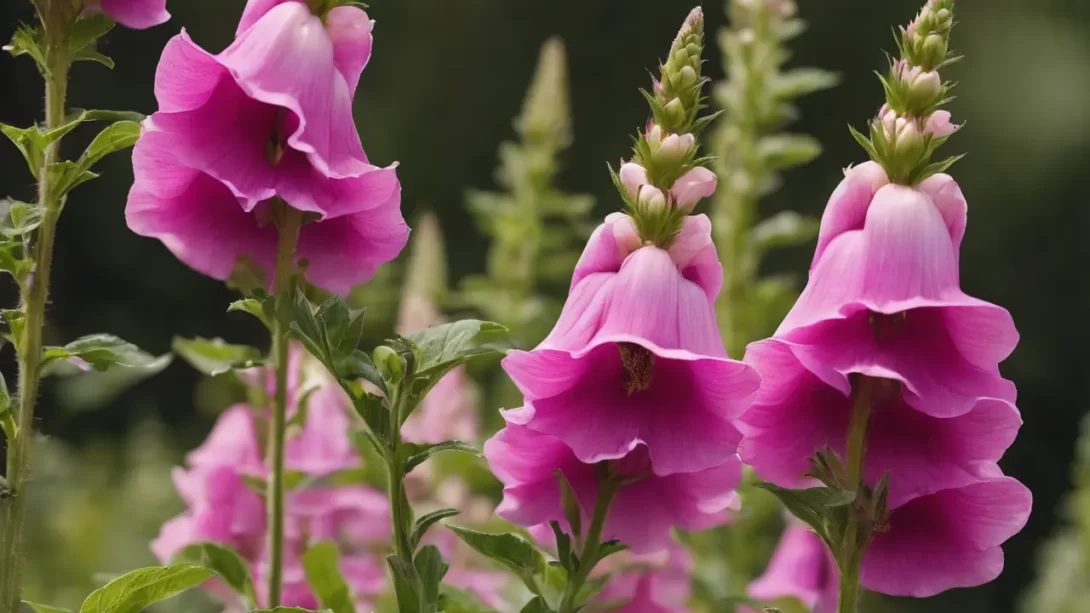Gardening in areas frequented by deer presents unique challenges, as these animals can significantly impact the variety and health of garden plants. Among the diverse flora in our gardens, Foxglove (Digitalis) is a plant of particular interest. Known for its striking, bell-shaped flowers and tall spires, Foxglove is a favorite in many gardens. This article explores whether Foxglove is a plant that deer typically eat, providing valuable insights for gardeners looking to create deer-resistant landscapes.
Deer Dietary Preferences
Deer are adaptable feeders with a diet that varies greatly depending on their environment and the time of year. They are primarily browsers, feeding on a variety of vegetation, including leaves, twigs, fruits, and flowers. However, deer tend to avoid plants that are toxic, have strong scents, or are unpalatable due to texture. The seasonal change in food availability also affects their diet; deer are more likely to venture into gardens and try new plants when natural food sources are scarce, particularly in late fall and winter.
Foxglove: Beauty and Toxicity
Foxglove, with its tall, colorful spikes, is an eye-catching addition to any garden. This perennial (or biennial, depending on the species) is known for its vibrant flowers ranging in color from purple and pink to white. Beyond its beauty, Foxglove is well-known for its toxic properties. All parts of the plant contain cardiac glycosides, which are dangerous if ingested. While these toxins are a serious consideration for pet owners and families with young children, they are also a key factor in deterring deer and other wildlife. Foxgloves prefer slightly acidic soil, partial shade, and good drainage, making them a versatile plant for various garden settings.
Deer and Foxglove: The Relationship
The toxic nature of Foxglove naturally raises questions about its palatability to deer. Generally, deer tend to avoid plants that pose a risk to their health, and Foxglove falls into this category due to its toxicity. While there are instances where deer might sample a wide range of plants, including those that are toxic, such behavior is not common and often a sign of extreme food scarcity or lack of knowledge in younger deer. Anecdotal evidence and observations from gardeners largely suggest that deer avoid Foxglove, preferring to forage for plants that are safer and more palatable. However, this doesn’t guarantee that Foxglove is completely deer-proof, as deer behavior can be unpredictable.
Protecting Your Foxglove from Deer
Even though Foxglove is less likely to be eaten by deer, gardeners in deer-prone areas may still want to take precautions. Using physical barriers like fencing remains one of the most effective methods to protect Foxglove and other plants. Fences should be high enough (at least 8 feet) to prevent deer from jumping over them. For gardeners seeking a less obtrusive option, deer repellents can be applied. These repellents, available in various forms, work by emitting odors or tastes that are unpleasant to deer. It’s important to note that repellents should be used as part of an integrated approach, as their effectiveness can vary based on weather conditions and deer acclimatization.
Alternative Plants for Deer-Prone Gardens
In addition to Foxglove, incorporating a variety of other deer-resistant plants can enhance the overall resilience of a garden. Plants with strong scents like lavender, sage, and thyme are typically less appealing to deer. Similarly, plants with prickly foliage or those that are also toxic, such as monkshood and hellebores, can be good choices. Creating a diverse garden with a mix of these plants not only deters deer but also contributes to a more robust and attractive garden ecosystem. When selecting plants, it’s important to consider their compatibility with the existing garden design and environmental conditions, ensuring a harmonious and sustainable garden layout.
Integrating Deer-Resistant Practices in Your Garden
To maximize the effectiveness of deer-resistant plantings like Foxglove, integrating various gardening practices is key. This includes thoughtful garden layout planning, where more vulnerable plants are placed closer to the house or in areas less accessible to deer. Using raised beds or containers can also elevate plants out of easy reach. Additionally, maintaining a clean and tidy garden can reduce the attraction for deer, as overgrown areas often provide hiding spots and attract them to linger.
Local Deer Behavior
Deer behavior and preferences can vary significantly by region, influenced by local deer populations, available natural food sources, and even past experiences with certain plants. In some areas, deer might completely avoid Foxglove due to ample alternative food options, while in others, especially those with limited foraging options, deer may be more inclined to sample a variety of plants, including those with some toxicity. Consulting with local gardening experts, neighbors, or extension services can offer insights into the specific deer behaviors in your area, allowing for more targeted and effective deer management strategies.
Conclusion
Foxglove’s beauty and toxicity make it a complex yet fascinating plant in the context of deer resistance. While its poisonous nature generally deters deer, there is no absolute guarantee against deer browsing. Implementing a combination of physical barriers, repellents, thoughtful garden design, and understanding local deer patterns can effectively reduce the risk of deer damage to Foxglove and other garden plants. Embracing these adaptive gardening practices not only protects your garden but also promotes a diverse and vibrant landscape that can coexist with local wildlife. By being proactive and informed, gardeners can enjoy the full splendor of their Foxglove, secure in the knowledge that they have taken steps to maintain a healthy and deer-resistant garden.



